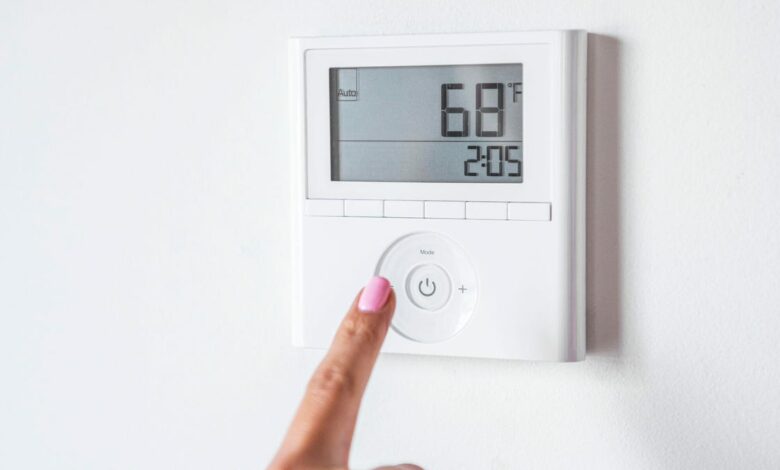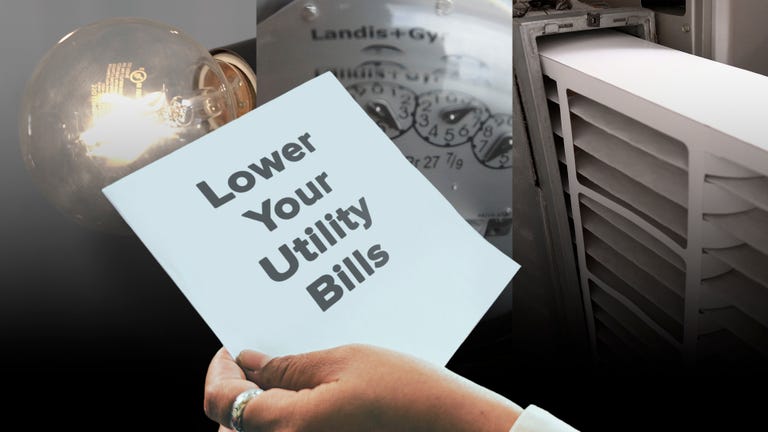Find the Sweet Spot for Your Thermostat: How to Save Money on Your Winter Heating Bills



Is it starting to get a bit cooler for you? It may be time to turn the heating back on in your home.

But simply turning the thermostat back on and preparing yourself for the new season is not always a simple procedure. And you may not be prepared for the higher energy bills that come with the change. Here’s the good news, though: Depending on what kind of HVAC system you have (and your personal cold tolerance), there are some very simple ways to use your thermostat to your advantage.
“It’s more than just a number on the wall,” says Julian Picard, owner of the HVAC company Centerline Mechanical.
Here’s what you need to know to stay comfortable this winter and possibly save some money on your heating bill.
This is the ideal thermostat temperature for winter
In winter, experts advise that you set your thermostat to 68 degrees Fahrenheit when you are home, and to 60 to 65 degrees when you are sleeping or away.
You can set it higher, but that reduces the efficiency and leads to a higher energy bill. It also depends on what the weather is like outside, Picard said. If it’s 20 F outside, maybe don’t set your thermostat to 80 F, he advised.
Then there’s the matter of changing the temperature at night or when you’re away from home. The Department of Energy introduces you Set your thermostat back 7 to 10 degrees compared to the normal setting for 8 hours per day, which equates to a saving of no less than 10% per year on heating and cooling.
Picard suggested a smaller change: Lower the temperature by just four degrees when you’re away or sleeping. This means that your system doesn’t have to work as hard to get back up to temperature.
“You don’t want to have drastic temperature changes,” says Mahlie Dukes, franchise owner of WIN Home Inspection in Indiana.
Also get to know your specific heating system. For example, if you notice that your home never reaches the temperature you set, that could be a sign that your system isn’t properly sized for your home, Picard says. And it’s a signal to lower your thermostat setting so your HVAC isn’t constantly running on overdrive.
Read more: You can actually save money by using electricity at these specific times
This is the ideal thermostat temperature for the summer
In the summer, the ideal temperature for your thermostat is 75 to 78 F when you’re home, and 80 degrees when you’re away or sleeping, Dukes said. The DOE suggests 78 F during the day, 82 F when you’re sleeping and 85 F when you’re away from home.
Most importantly, you want to make sure your system can handle this. If you notice that the house never gets as cool as your thermostat setting, it probably means that your system is not suitable for your home and you may want to go easy on the cooling. You can also check how well your doors and windows are sealed and how well insulated your home is.
Air conditioners can only cool your home 15 to 20 degrees below the outside temperature, so setting the thermostat too low can cause your system to run without being effective.

Check this out: Easy ways to reduce your energy bills and save money
Does it matter what type of HVAC you have?
Yes and no. The same general temperature recommendations apply regardless of the type of HVAC you have in your home, Picard says.
But your results may vary depending on the type and size of your system. Systems that are too large or too small for your home will operate inefficiently, leading to higher heating and cooling costs.
That’s why Picard recommends that you have your system inspected and cleaned annually by an HVAC professional. These professionals can tell you how to best use your specific system for the best comfort and efficiency, he said.
Avoid this common thermostat mistake
Let’s say your house is a lot colder than you would like, and you want it to be perfect now. It might be 65 F indoors, but you might want it to be 70 F. Don’t set it to 75 F hoping that will warm it up faster. Most HVAC units have two settings – on or off – and it is not possible to reach 70 F any faster.
Set your thermostat to the desired temperature. If you set a warmer or cooler temperature than you actually want, hoping it will speed things up, it will only result in overcooling or overheating – and overspending on your energy bill.
Is your thermostat in the wrong place?
Your thermostat knows how to set the temperature because it has a thermometer in it. So if your thermostat is in the wrong place, you won’t get an accurate reading of the temperature in your home.
You want to avoid placing your thermostat in a place where the temperature or humidity changes regularly, such as in the kitchen or bathroom. If it is on an outside wall, it may be more sensitive to changes in outside temperature.
Instead, try placing your thermostat on an interior wall, such as in your living room.
And if you have a thermostat that supports remote room sensors, sensors in other locations, such as a bedroom, can help you better control the temperature in the rooms where you spend most of your time.
Save money by adjusting your thermostat
Lowering your energy bill this year doesn’t have to be difficult.
“There’s a big misconception that to be energy efficient you have to be uncomfortable,” Picard says.
Homeowners can also look at areas beyond their thermostat. For example, investing in good insulation can significantly reduce the burden on your HVAC system.
“You’d be surprised how much energy we put through our attics,” Picard said.
That annual inspection and maintenance appointment can also help you save money. Picard said buildup in your HVAC system can lead to efficiency losses of up to 10% per year, which you’ll see on your energy bill. That’s why it’s a good move to have it cleaned annually.
And if you’re in the market for a new HVAC system, now’s a good time to take stock and make sure what you have will suit your specific home.




